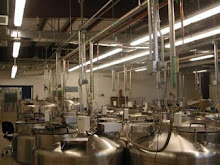Given these striking temperature effects observed with mock samples, we cycled viably cryopreserved PBMCs through the GTTW to observe the effects oh apoptosis. Using a programmable rate-controlled liquid nitrogen freezer, we exposed PBMC samples to one entire cycle of temperature change (-150°C to -114°C) for 10 min and then back to -150°C. Next, we exposed aliquots to multiple temperature cycles (10, 20 and 40). All samples were then assessed for the incidence of apoptosis using Hoechst staining. There was no considerable difference in the number of positively stained cells (% apoptotic nuclei) from PBMCs stored at -150°C compared to those that underwent 1, 10, 20 and 40 multiple temperature cycles.

Accordingly, we determined to examine this issue by incubating frozen PBMC samples at -114°C for a longer period (e.g., 48 hours) and then returning them to -150°C. Apoptosis values were considerably higher from PBMC samples held at -114°C than in PBMCs stored for the extent of the experiment at -150°C.
Our information illustrates that, when exposed to a warmer temperature for 48 hours, the quality of cryopreserved samples was negatively affected. We conclude that apoptosis occurred due to temperature fluctuations around the GTTW (-132°C). Similar findings were discovered when PBMCs where stored at -80°C for 48 hours.



